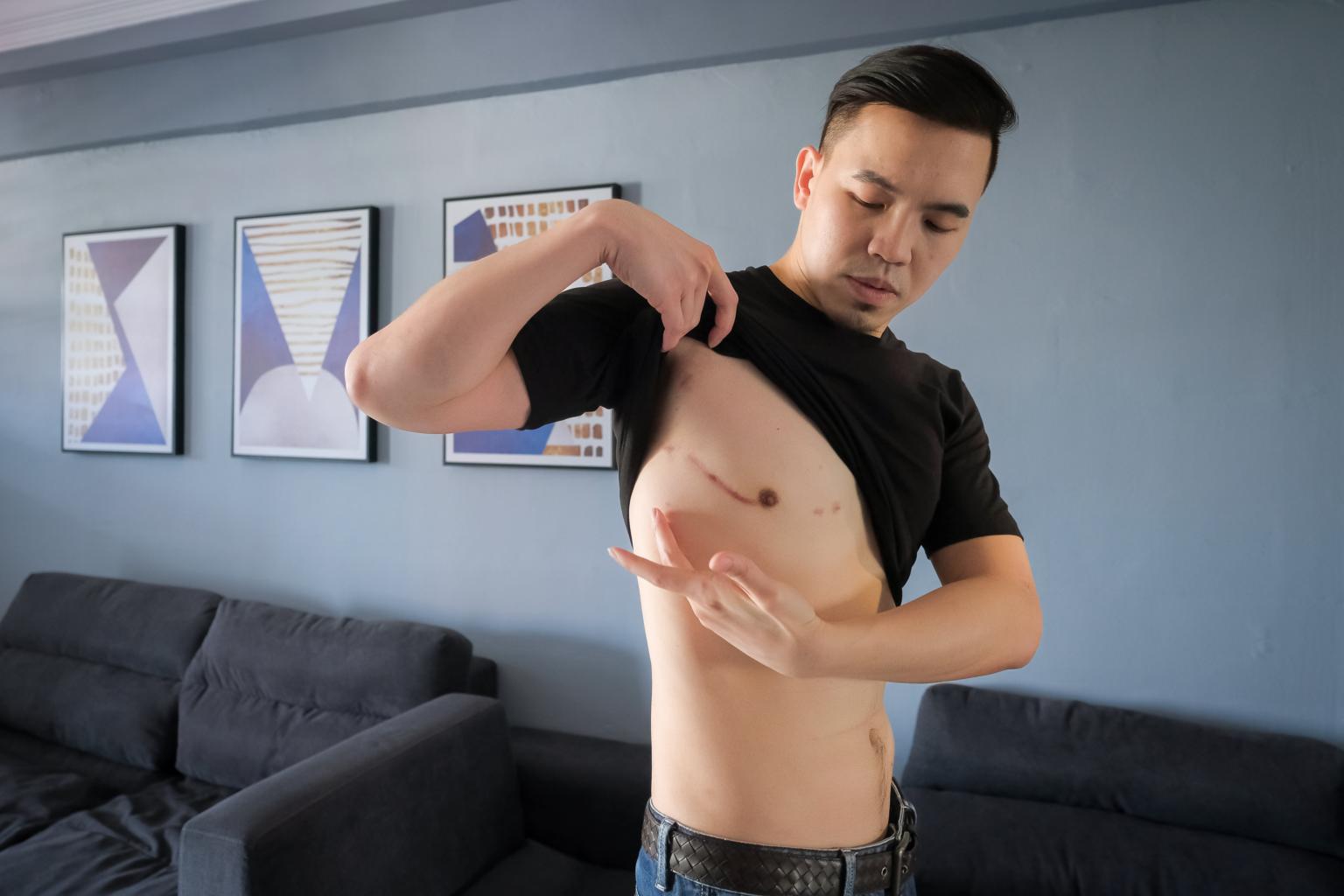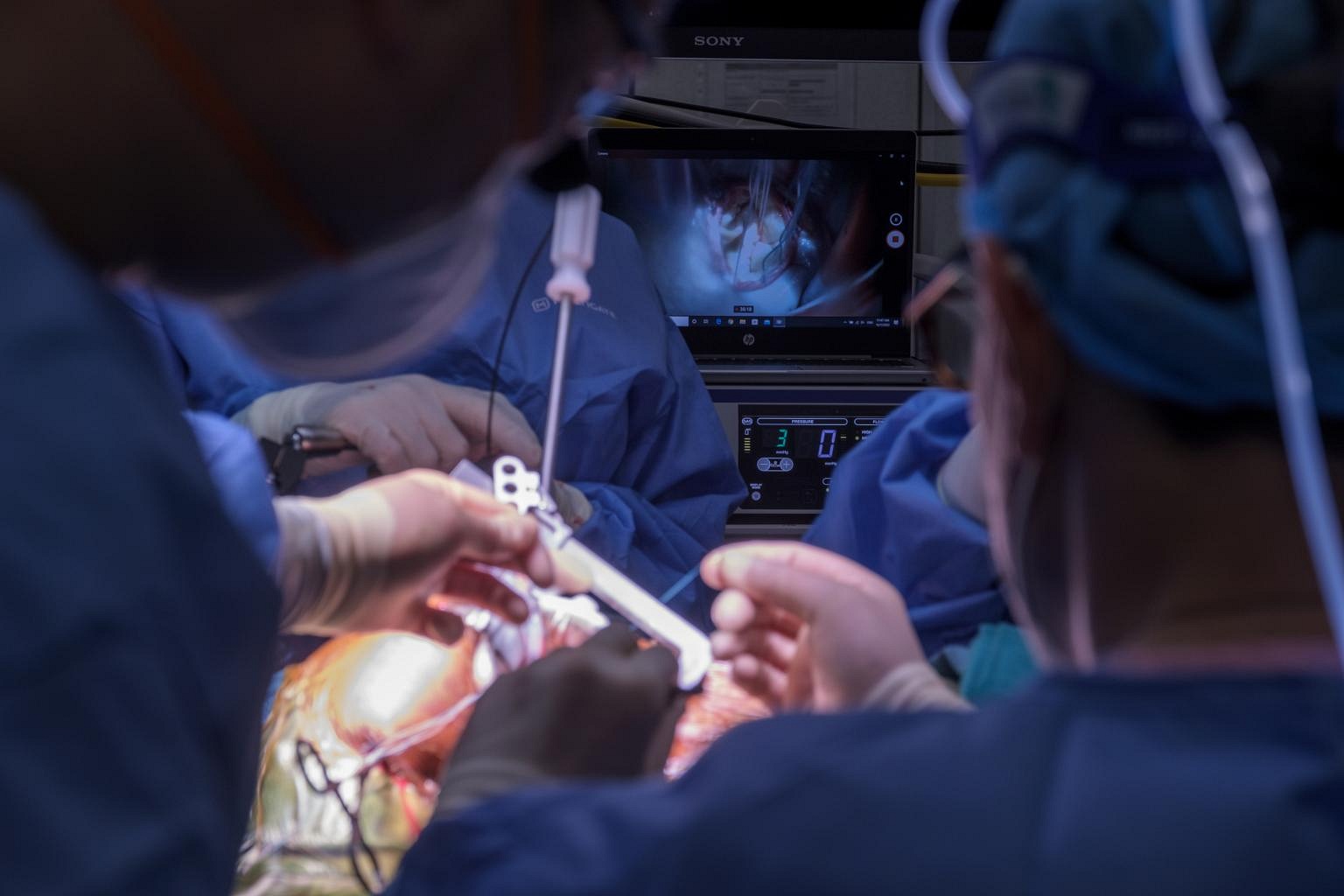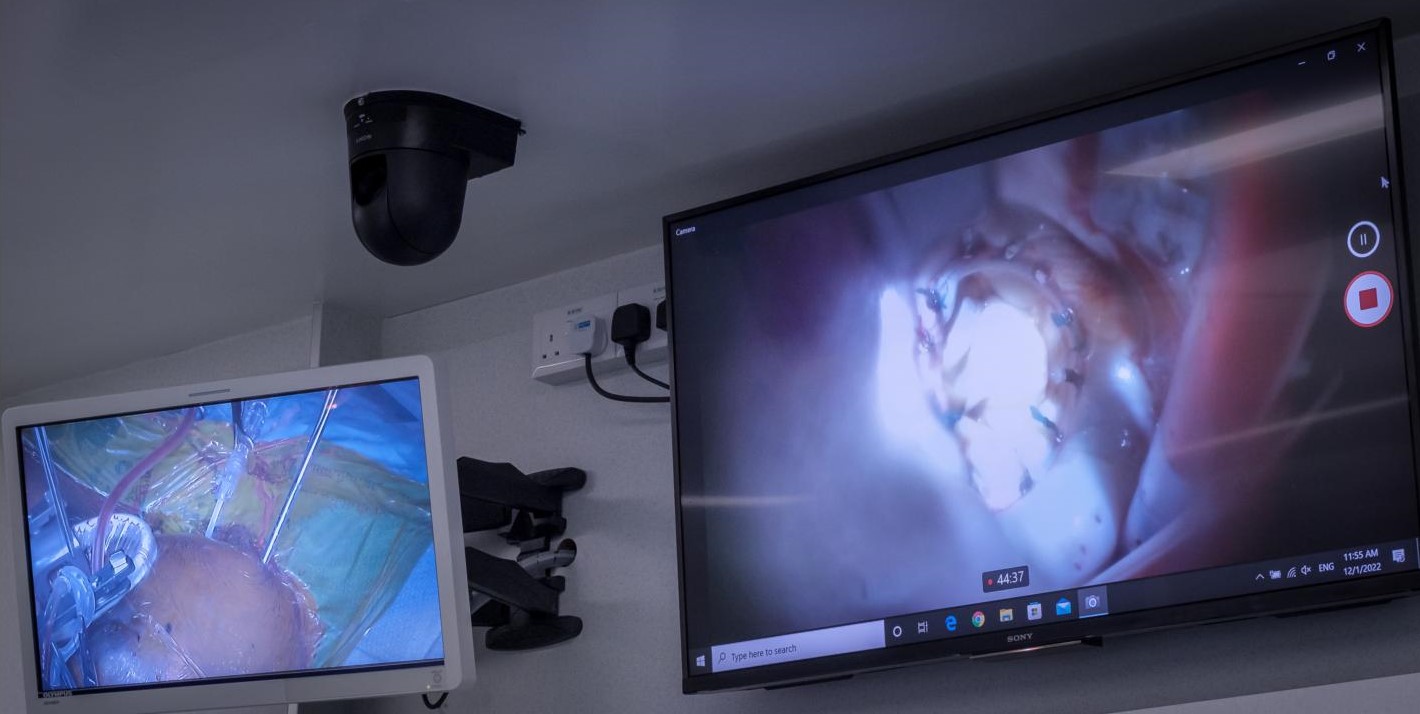New invention a plus for heart surgery, reducing trauma and hastening recovery
Sign up now: Get ST's newsletters delivered to your inbox
Follow topic:
SINGAPORE - People undergoing minimally invasive heart surgery can look forward to having one fewer incision through their chest wall - reducing trauma for them.
An innovation - a flexible, miniature video camera - that passes through the shaft of an existing surgical instrument will replace an existing bulky camera system.
Invented by surgeons at National University Heart Centre, Singapore (NUHCS), this new equipment improves Singapore's state of the art healthcare scene.
Currently, minimally invasive heart surgery requires the use of endoscopic camera systems that are large and bulky.
This new system is much smaller and the camera and its cable are flexible, Associate Professor Theodoros Kofidis, head and senior consultant at the department of cardiac, thoracic and vascular surgery in NUHCS, said.
Named the Endopsis system, this National University of Singapore-made system is undergoing clinical trials. Since July 2021, it has been used on six patients.
The Straits Times witnessed the sixth surgery on Jan 12 - a minimally invasive mitral valve repair surgery performed on a 69-year-old patient.
She was discharged in less than a week.
Mr Png Zhijie, 39, the first trial patient, was initially apprehensive when he was shown the equipment.
"However, after the doctors explained to me, I guess it was a no brainer... I was out from hospital by the sixth day after my surgery," the IT professional added.
The traditional method for heart surgery, called median sternotomy, involves cutting through the entire length of the chest bone, leaving the patient with a 20cm scar and restriction in movement and activity for some time.
Recovery includes the healing of the sternum, the bone in the middle of the chest.
With technological improvements in the 1990s, less-invasive techniques were developed, significantly reducing patient trauma, pain, scarring and recovery time.

Mr Png Zhijie, the first trial patient of NUH's Endopsis system, showing his scar.
ST PHOTO: GAVIN FOO
Minimally invasive heart surgery can be used to fix faulty heart valves, a hole in the heart, irregular heartbeats and for coronary artery bypass graft surgery to improve blood supply to the heart. However, in some cases of complex and combined heart problems, minimally invasive techniques may not be possible.
In a minimally invasive procedure, the surgeon makes a 4cm to 6cm incision between the ribs on the side of the chest, without cutting any bone. Then, the so-called endoscopic instruments and camera will be passed through additional small incisions through the chest wall. The existing camera system requires one of these incisions.
A 2cm to 3cm incision is usually (but not always) necessary in the groin, through which tubes are inserted to a heart-lung machine that takes over the functions of the patient's heart and lungs during the operation.
In this innovation, named the Endopsis retractor system, the shaft of the retractor which holds the heart open during the operation is made hollow so that the camera and its cable which provides the light source can go through it very easily, said Prof Kofidis, who led the invention team.
This new invention will make existing steel fixators - which hold the current camera system in place - obsolete. The team developed a new kind of screw which presses against the surface of the chest and holds the system in place without any additional fixators.
"Current steel fixators take up a lot of place, can be heavy, bulky and even dangerous to some extent when you try to fix them," Prof Kofidis said.
"The camera may be moved in various angles to provide various viewing angles of interest to help facilitate more complex procedures. This innovation saves the patient unnecessary incisions, and the surgeon excess labour and complexity on the operation field," he added.

A screen shows the display from a miniature-video camera from the new Endopsis system, a less invasive surgical technology.
ST PHOTO: GAVIN FOO
Dr Chang Guohao, a consultant cardiac surgeon at the department of cardiac, thoracic and vascular surgery in NUHCS, said of his experience using the new system in the mitral valve repair surgery: "This is a user-friendly system that achieves clear endoscopic view of the mitral valve at a high resolution.
"Compared to the traditional system that we have been using, this set-up is simpler and provides an uncluttered operative field."

A screen shows the display from a miniature-video camera from the new Endopsis system.
ST PHOTO: GAVIN FOO
Prof Kofidis said that in terms of costs, this new equipment would add about $150 to the total operation bill. The actual amount would also depend on factors such as the type of surgery and complexity of the case.
"Though minimally invasive heart surgery may be more technical and involve certain gadgets, it is not necessarily more expensive to the patient. This is mainly because of shorter hospital stay, faster mobilisation and recovery, and less consumption of resources in the post-operative period," he added.
Dr Tan Wu Meng, who is chairman of the Government Parliamentary Committee for health, said: "NUHCS' invention shows the importance of deeply understanding the challenges faced by real-world practitioners, so that innovators can make challenging work less difficult, and easier for the patient's recovery too.
"This also helps Singapore move a step closer in becoming a medtech hub with high standards that can bring the latest innovations to help patients, while creating new job opportunities for Singaporeans."
The Endopsis system is currently undergoing trials only at NUHCS.

